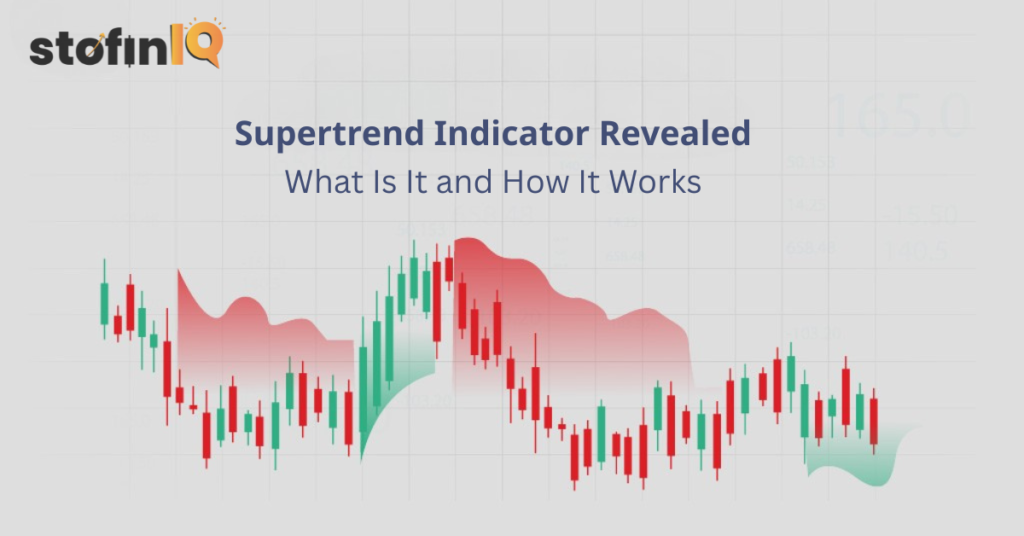Have you ever looked at a stock chart and thought it was just a confusing mess of lines, numbers, and colors? You’re certainly not alone in that feeling. While stock charts may seem intimidating at first, they can be incredibly useful once you learn the basics. This guide is designed to help both beginners and those needing a quick review to easily understand how to read stock charts. Let’s explore this together!
Table of Contents
ToggleWhy Should You Learn to Read Stock Charts?
Before diving into the details, let’s discuss the importance of reading stock charts. Stock charts serve as a visual representation of a stock’s performance over time. They help you:
1. Spot Trends: Determine whether the stock is trending upwards, downwards, or moving sideways.
2. Identify Patterns: Recognize specific patterns that may indicate potential buying or selling opportunities.
3. Make Informed Decisions: Rather than relying on guesswork, you can base your trades on data and trends.
4. Manage Risk: Charts assist you in establishing realistic entry and exit points, helping to reduce emotional decision-making.
In summary, learning to read stock charts is akin to learning to read a map—it empowers you to navigate the stock market with confidence.
The Basics: What’s in a Stock Chart?
At its core, a stock chart illustrates the price movement of a stock over a specific period. Here are the key components you will typically find on most charts:
1. Price Axis (Y-axis): This vertical axis displays the stock’s price.
2. Time Axis (X-axis): This horizontal axis represents the time period (e.g., days, weeks, months).
3. Price Line or Candlesticks: This is the main part of the chart, showing the stock’s price fluctuations.
4. Volume Bars: These indicate the number of shares traded during a specific time period.
Types of Stock Charts

There are three common types of stock charts:
1. Line Charts: These are simple charts that show a stock’s closing prices over time using a single line. They are good for beginners who want a quick overview.
2. Bar Charts: These charts display the opening, highest, lowest, and closing prices for each time period with vertical bars.
3. Candlestick Charts: These charts are easier to read than bar charts. Each “candlestick” shows four important prices: the opening price, the highest price, the lowest price, and the closing price. The colors of the candlesticks indicate whether the price increased or decreased.
For beginners, candlestick charts are a good choice because they provide a lot of information.
How to Read Candlestick Charts
Candlestick charts may seem complicated at first, but they’re quite simple once you understand the key components. Here’s a clear breakdown:
1. The Body: The thick part of the candlestick represents the opening and closing prices of the stock.
- If the body is green (or white), it indicates that the stock closed higher than it opened.
- If the body is red (or black), it signifies that the stock closed lower than it opened.
2. The Wicks (or Shadows): The thin lines above and below the body of a candlestick show the highest and lowest prices during a specific time.
If a candlestick has a long green body and short wicks, it means the stock had a strong price increase that day. On the other hand, a candlestick with a long red body and long wicks suggests there was a lot of price movement and selling pressure.
Key Patterns to Watch For
Once you understand the basics, you can start looking for patterns that may indicate how prices could move in the future. Here are some common patterns:
1. Support and Resistance:
- Support: This is a price level where a stock usually stops falling and begins to rise again.
- Resistance: This is a price level where a stock struggles to go any higher.
These levels can help guide your decisions on when to buy or sell.
2. Trend Lines:
- Uptrend: This line connects higher lows, indicating that the stock is increasing in value.
- Downtrend: This line connects lower highs, showing that the stock is decreasing in value.
- Sideways Trend: This occurs when the stock remains within a certain range and does not make significant moves up or down
3.Candlestick Patterns:
- Doji: This candlestick has a very small body, indicating uncertainty in the market.
- Hammer: This candlestick features a long lower wick and a small body, often suggesting a potential reversal in price.
- Engulfing Pattern: This occurs when a large candlestick “engulfs” the previous one, indicating a strong change in momentum.
Using Indicators to Enhance Your Analysis
The backbone of stock charts lies in price and volume, yet technical indicators can add valuable layers of understanding. These are a few which are commonly used:
- Moving Averages: These indicators smooth out price data to highlight trends, with the 50-day and 200-day averages being particularly favored.
- Relative Strength Index (RSI): This measures whether a stock is overbought or oversold, giving you a clearer picture.
- MACD (Moving Average Convergence Divergence): This helps in recognizing changes in momentum.
While these indicators can enhance your analysis, it’s wise to avoid overcomplicating things—start with one or two and build your expertise from there.
Tips for Beginners
1. Keep It Simple: Start by getting to know price movements and some basic patterns. There’s no need to rush into advanced indicators right away!
2. Practice Makes Perfect: Take advantage of free charting tools like TradingView or Yahoo Finance to hone your skills. It’s a great way to practice reading charts without any financial risk.
3 Blend It with Fundamentals: While charts are super helpful, remember to also look at the company’s financial health, industry trends, and current news. It all ties together!
4. Be Patient with Yourself: Learning to read stock charts is like developing any skill—it takes time and practice. Don’t worry if it feels a bit overwhelming at first; you’ll get the hang of it!
Final Thoughts
Learning how to read stock charts is like learning a new language—it takes time and practice, but once you get the hang of it, it opens up a whole new world of opportunities. Whether you’re looking to trade actively or just want to make smarter long-term investments, understanding stock charts is a valuable skill.
So, grab a cup of coffee, pull up a stock chart, and start exploring. The more you practice, the more confident you’ll become. Happy charting!

